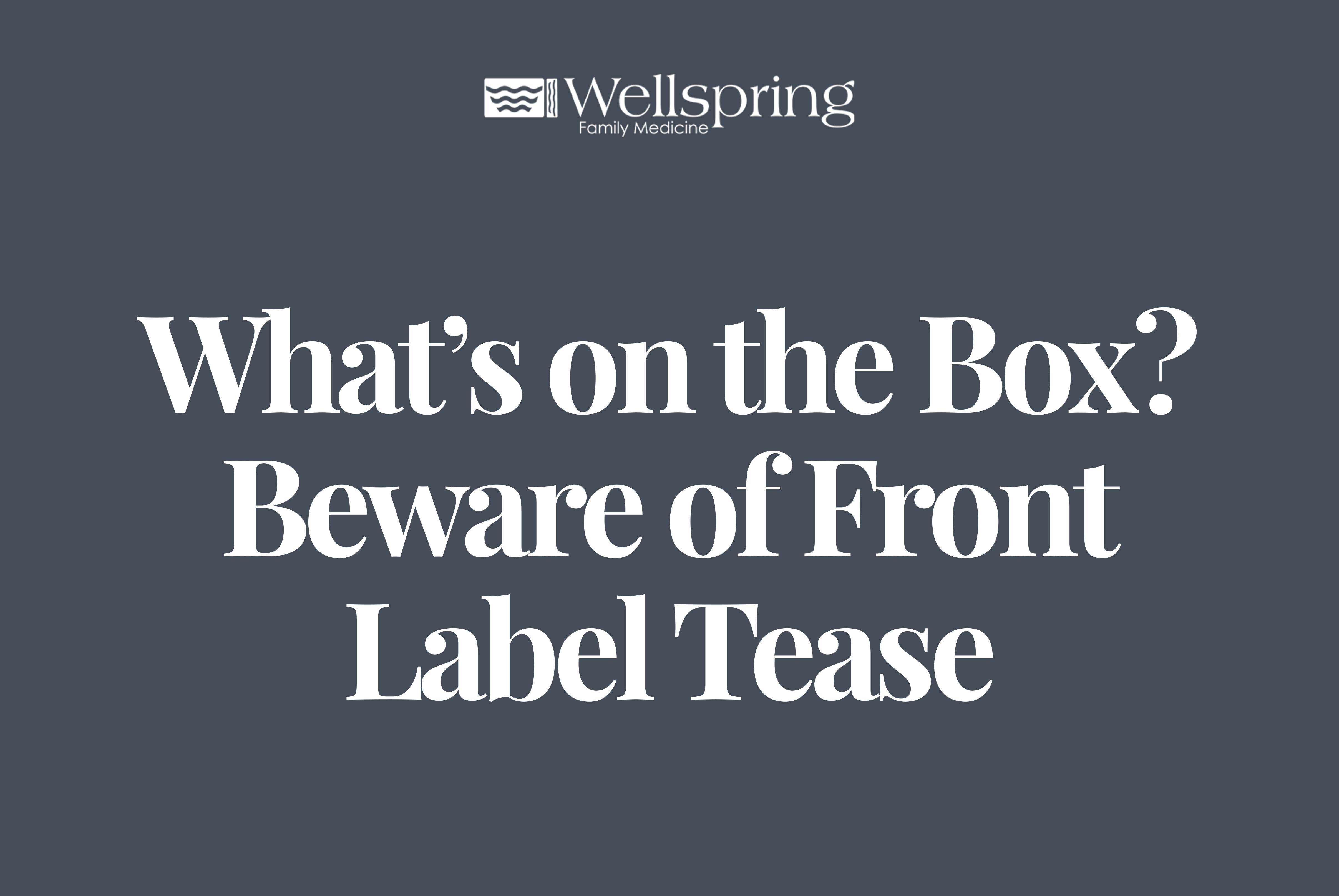
07 Apr What’s On the Box? Beware of Front Label Tease
By Dr. Michele Reid
What the food industry puts on their packaging can be confusing at best, misleading at worse. They can give consumers a false sense of eating healthy; leading them to eat more processed and packaged foods – which ultimately lead to a slew of health issue that our nation is facing right now. We want you to be smarter than the food industry and become a detective. Let’s get straight to the point and read below the words you should be looking out for:
- Fortified, enriched, added, extra, and plus = nutrients such as minerals and fiber have been removed and then vitamins are added back during processing.
Look for 100% whole-wheat bread, and high-fiber, low-sugar cereals. - Fruit drink = probably little or no real fruit and a lot of sugar.
Look for products that say “100% Fruit Juice”, and consume in moderation. Even better, eat a piece of fruit instead. - Made with wheat, rye, or multi-grains = have very little whole grain.
Look for the word “whole” before the grain to ensure that you’re getting a 100% whole-grain product. - Natural = the manufacturer started with a natural source, but once it’s processed the food may not resemble anything natural.
Look for “100% All Natural” and “No Preservatives.” - Organically grown, pesticide-free, or no artificial ingredients: Trust only labels that say “Certified Organically Grown” and look for the USDA seal.
- Sugar-free, reduced fat or fat-free: Don’t assume the product is low-calorie. The manufacturer compensated the change in texture with unhealthy ingredients that don’t taste very good and some of these products have no fewer calories than the real thing. Also, sugar-free foods are most likely to be sweetened with artificial sweeteners – which the body recognizes as toxic chemicals.
- The term “whole grain” is allowed to be used very loosely. The nutrition value of flour made from whole grain is quite different from when you eat the grain in it’s entirely – such as when you cook quinoa, brown rice, or millet.
- Zero trans fat = this label is allowed on foods that contain less than 0.5 gram of trans fat per serving. (No amount of trans fat is recommended, and it only takes 2 grams of trans fats to show its harmful effect.)
Reading the ingredient list on a nutrition label can be daunting at times. Now that you know what to look out for on the FRONT of the packaging, here are some excellent tips on reading the INGREDIENT LABEL on the back or side of the product:
Ingredients are listed in order from the greatest amount to the least.
- The fewer the number of ingredients, the better.
- The first or second ingredient should be what the packaging claims the product to be.
- If the first ingredient is “sugar”, put it back!
- If the first ingredient says “enriched wheat flour”… think twice.
- If there’s a long list of scary-sounding ingredients you can’t pronounce… not a good idea!
- Say no to artificial sweeteners, colorings and flavorings – they mess with your brain!
If you want to learn more about food labels and how it can change the whole course of your health, wellness and weight loss journey contact us about the Size Wize Medical Weight Management Program where every month we take our participants on a very eye-opening Grocery Store Tour at a local supermarket. See you there!



No Comments